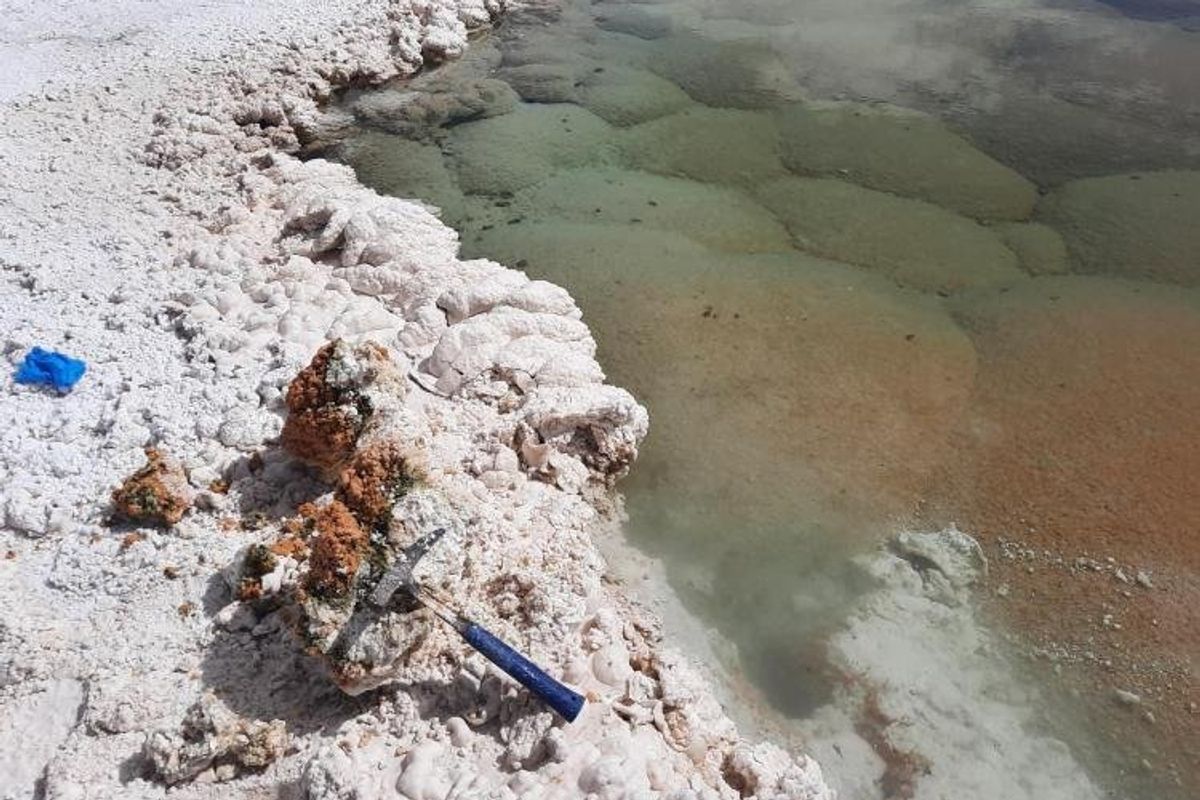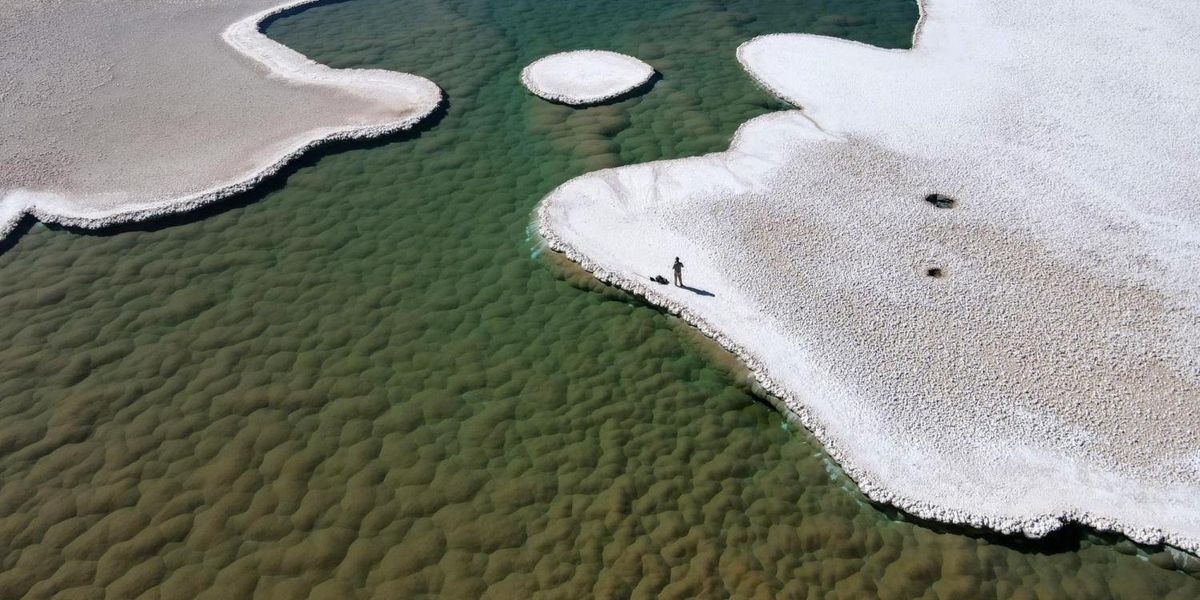A team of scientists has discovered a “strange” ecosystem in a remote area of the Atacama Desert that is “unlike anything” seen before.
There was a stunning mixture of clear lakes surrounded by vast salt plains on Argentina’s Puna de Atacama – a giant plateau that rises more than 12,000 feet above sea level.
One of the driest environments on Earth, rain here rarely – if ever – falls and the sun’s rays beat down the terrain relentlessly, creating an environment in which few animals or plants can survive.
However, in April of last year, geologist Brian Hynek, of the University of Colorado Boulder, was looking through some satellite images of the area when he stumbled upon what looked like a network of lakes.
Fascinated, he and microbiologist Maria Farias drove as far as they could toward the mysterious formations, then walked several miles under the hot sun, according to one researcher. New release Published by CU.
“In some places, we were knee-deep in salt mud,” Hynek said.
But once they got to the site, they realized it was worth the effort: they had come up with something really cool.

There, they found a network of 12 lakes, spanning 25 acres (10.1 hectares) and surrounded by barren mountains in the distance.
Beneath its shimmering waters, Hynek spotted huge mounds of green plants, about 15 feet (4.5 meters) wide and several feet high.
He identified them as stromatolites, complex microbial communities that form huge rock ridges as they grow, much like coral reefs build.
However, these things were different from anything any of the scientists had ever seen before.
Preliminary observations suggest that these communities may resemble stromatolites that existed during a period of Earth’s history called the Early Archaean, when oxygen was almost non-existent in the atmosphere.
“This lake could be one of the best modern examples of the first signs of life on Earth,” Hynek said.
“It’s unlike anything I’ve ever seen before, or, in fact, like anything any scientist has ever seen.”
While stromatolites exist on Earth today, including off the coast of the Bahamas, these modern microbial assemblages tend to be relatively small. They also grow passively by trapping grains of sand and other debris floating in the sea, the University of California noted in its press release.
In contrast, ancient stromatolites can extend up to 20 feet high, absorbing calcium and carbon dioxide from the surrounding water, causing minerals to precipitate around them.

The mounds in the Atacama Lakes looked more like those archaeological communities than anything else alive on Earth today.
Its rock layers consist mainly of gypsum, a mineral common in stromatolite fossils but absent in almost all modern stromatolites.
Biologically, it was composed of an outer layer of photosynthetic microbes called cyanobacteria and a pink core rich in archaea, single-celled organisms often found in the world’s most extreme environments.
Hynek also noted that the lake’s environment could resemble conditions that existed on ancient Earth, with its salty, acidic waters and exposure to intense solar radiation (due to its high altitude).
Moreover, stromatolite communities could provide experts with unprecedented insight into how life arose on Mars, which looked like our planet billions of years ago.
“If life on Mars had evolved to the fossil level, it would have been like this,” the geologist and space physicist said.
“Understanding these modern communities on Earth can tell us what to look for as we search for similar features in Martian rocks.”

Hynek and Farias hope to conduct further experiments to confirm that these previously unknown stromatolites are actively building their rock formations, and to learn how microbes are able to survive in such extreme conditions.
However, time may be running out.
A company based out of Argentina has already earmarked the area for lithium mining.
Once this process begins, it could completely devastate the Atacama Lakes.
“This entire unique ecosystem could disappear within years,” Hynek said. “We hope we can protect some of these sites, or at least detail what is there before they disappear or are disturbed forever.”
He described finding the alien environment as “the biggest moment of discovery I’ve ever experienced in my life.”
“It’s amazing that you can still find undocumented things like that on our planet,” he said.
subscription For our free weekly Indy100 newsletter
Share your opinion in our democratic news. Click the upvote icon at the top of the page to help move this article up the indy100 rankings

“Typical beer advocate. Future teen idol. Unapologetic tv practitioner. Music trailblazer.”







More Stories
Boeing May Not Be Able to Operate Starliner Before Space Station Is Destroyed
How did black holes get so big and so fast? The answer lies in the darkness
UNC student to become youngest woman to cross space on Blue Origin